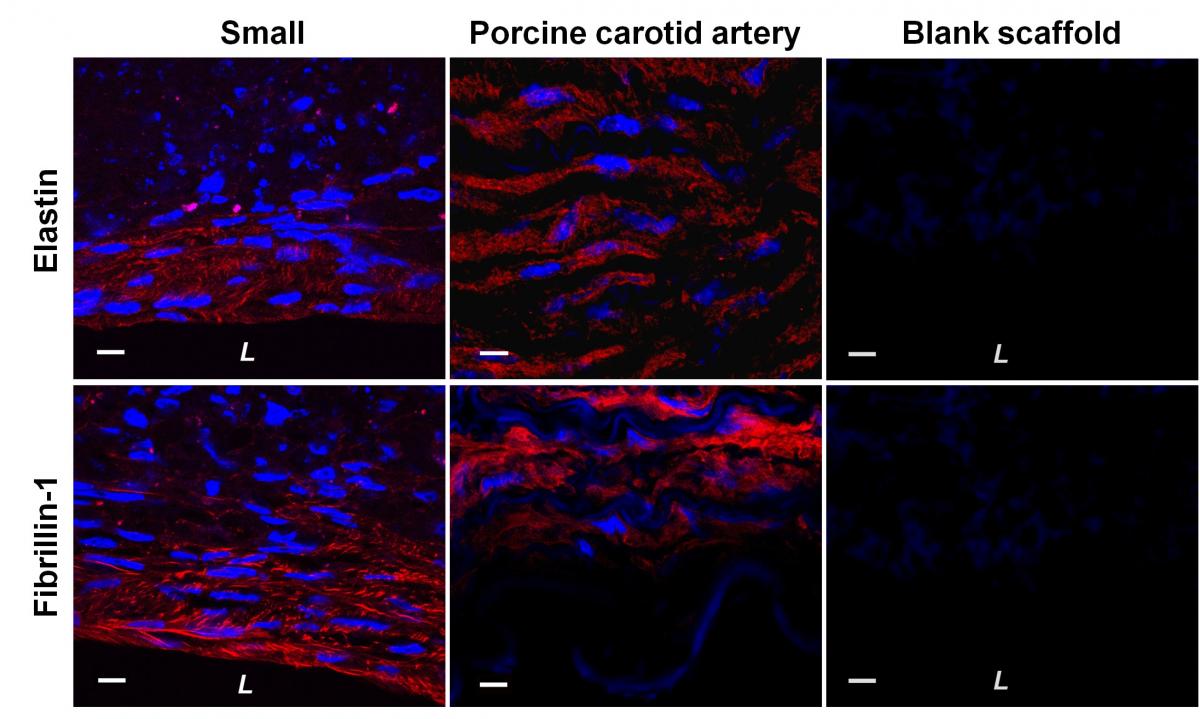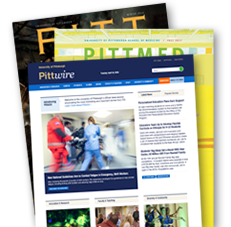Pitt Researchers Grow Arteries With Highest Level of Elastic Protein Reported, Important Step for Living Vascular Transplants
High resolution image(s) available >
PITTSBURGH—University of Pittsburgh researchers have grown arteries that exhibit the elasticity of natural blood vessels at the highest levels reported, a development that could overcome a major barrier to creating living-tissue replacements for damaged arteries, the team reports in the Proceedings of the National Academy of Sciences.

The team used smooth muscle cells from adult baboons to produce the first arteries grown outside the body that contain a substantial amount of the pliant protein elastin, which allows vessels to expand and retract in response to blood flow. Lead researcher Yadong Wang, a professor of bioengineering in Pitt’s Swanson School of Engineering, his postdoctoral researcher Kee-Won Lee, and Donna Stolz, a professor of cell biology and physiology in Pitt’s School of Medicine, cultured the baboon cells in a nutrient-rich solution to bear arteries with approximately 20 percent as much elastin as an inborn artery.
The Pitt process is notable for its simplicity, Wang said. Elastin—unlike its tougher counterpart collagen that gives vessels their strength and shape—has been notoriously difficult to reproduce. The only successful methods have involved altering cell genes with a virus; rolling cell sheets into tubes; or culturing elastin with large amounts of transforming growth factor, Wang said. And still these previous projects did not report a comparison of elastin content with natural vessels.
Wang and his colleagues had strong, functional arteries in three weeks. The team first seeded smooth-muscle cells from 4-year-old baboons—equivalent to 20-year-old humans—into degradable rubber tubes chambered like honey combs. They then transferred the tubes to a bioreactor that pumped the nutrient solution through the tube under conditions mimicking the human circulatory system—the pump produced a regular pulse, and the fluid was kept at 98.6 degrees Fahrenheit. As the muscle cells grew, they produced proteins that fused to form the vessel.
Mechanical tests revealed that the cultured artery could withstand a burst pressure between 200 and 300 millimeters of mercury (mmHg), the standard unit for blood pressure, Wang said; healthy human blood pressure is below 120 mmHg. In addition to containing elastin, the artery also had approximately 10 percent of the collagen found in a natural vessel, Wang said.
The process the Pitt team used to cultivate the artery resembles how it would be used in a patient, he explained. The cell-seeded tube would be grafted onto an existing artery. As the rubber tube degrades, the vascular graft would develop into a completely biological vessel.
The next steps in the project, Wang said, are to design a vessel that fully mimics the three-layer structure of a human artery and to prepare for surgical trials.
The project received support from the National Heart, Lung, and Blood Institute of the National Institutes of Health.
###
1/31/11/tmw/lks/jdh
University Units
Media Resources
Schools of the Health Sciences Media Relations
For more information about Pitt's schools of dental medicine, health and rehabilitation sciences, medicine, nursing, pharmacy, and public health, click here >
To locate stories from health science schools prior to 2013, visit the UPMC news archives »
Urgent Question?
University of Pittsburgh news reps are available to answer urgent media inquiries. Outside of regular business hours (Mon-Fri, 8:30 a.m.-5 p.m.), please email us at media@pitt.edu.
News reps for University of Pittsburgh Health Sciences schools can be reached outside of regular business hours through the paging operator at 1+412-647-2345.


